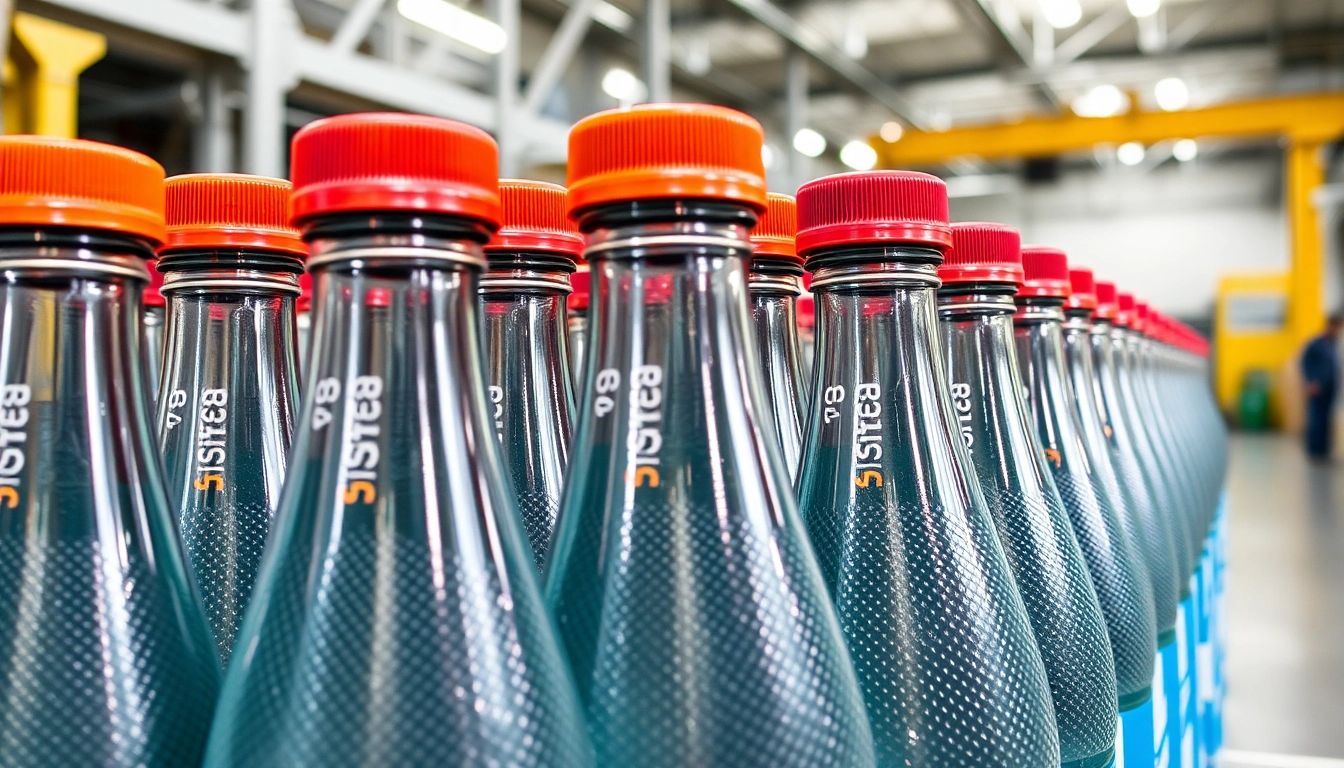Introduction to Polietilen Şişe and Its Significance in Packaging
In the modern manufacturing and packaging industries, the choice of container material plays a pivotal role in product safety, cost efficiency, and environmental impact. Among the various options available, polietilen şişe stands out as a versatile and reliable solution for a multitude of applications. From food and beverage packaging to chemical storage, these plastic bottles have become an industry staple, thanks to their durability, safety, and adaptability. Their importance is magnified in sectors where contamination risk must be minimized, and product integrity preserved, which is why understanding their characteristics and proper utilization is crucial for manufacturers and consumers alike.
What is Polietilen Şişe and How Is It Manufactured?
Definition and Basic Manufacturing Process
Polietilen şişe, commonly known as polyethylene bottles, are containers made from polyethylene polymers—most often high-density polyethylene (HDPE) or polyethylene terephthalate (PET). These plastics are synthesized through polymerization processes that involve the chemical bonding of ethylene molecules under controlled conditions. The manufacturing of these bottles typically involves extrusion, blow molding, or injection molding, each tailored to create specific shapes, sizes, and performance characteristics.
Production Steps in Detail
The process begins with the polymerization of ethylene gas, which results in raw polyethylene pellets. These pellets are then melted and extruded into preforms or parisons, and finally blown into shape within molds under high pressure and temperature. This process guarantees uniformity, strength, and clarity in the final product. Manufacturers often add additives such as UV stabilizers, colorants, or anti-static agents to enhance performance depending on the intended application.
Common Uses of Polietilen Şişe in Various Industries
Food and Beverage Industry
Polietilen şişe is widely used to package liquids like water, juices, milk, and oils. Their chemical resistance ensures that flavors and nutrients remain unaltered, making them the preferred choice for consumables. The transparency of PET bottles also aids in product visibility, boosting consumer confidence.
Chemical and Pharmaceutical Applications
In the chemical sector, these bottles are instrumental in storing cleaning agents, detergents, and industrial chemicals due to their chemical inertness. Pharmaceutical companies utilize them for storing syrups, medicinal liquids, and other sensitive substances, often with specialized caps and tamper-evident features.
Cosmetics and Personal Care
Cosmetic products such as lotions, shampoos, and oils are commonly packaged in polyethylene bottles, leveraging their ease of fabrication into various shapes and sizes that appeal to consumers and facilitate usage.
Advantages of Using Polietilen Şişe Over Other Materials
Durability and Impact Resistance
Compared to glass or metal containers, polyethylene bottles are lightweight, less prone to breakage, and capable of withstanding rough handling during transportation and storage. This resilience reduces product loss and enhances logistical efficiency.
Cost-Effectiveness
Production costs for polyethylene bottles are lower due to fast manufacturing processes and material affordability. Additionally, their reusability and recyclability contribute to overall economic benefits in both production and disposal stages.
Safety and Compliance
Polietilen şişe is inherently non-reactive, ensuring that stored products do not react with the container. They comply with international safety standards for food and chemical contact, offering peace of mind to manufacturers and consumers.
Types and Variations of Polietilen Şişe
Different Sizes, Shapes, and Cap Options
Polyethylene bottles come in an extensive range of sizes—from small 50 ml containers for cosmetics to large 5-liter bottles for oils and cleaning products. Shapes vary from cylindrical, square, to ergonomic designs that enhance grip and usability. Caps also differ in feature and material, including screw caps, snap caps, and tamper-evident closures, tailored to specific needs.
Customization and Innovation in Polietilen Şişe Design
Manufacturers are now offering customized bottles with unique surface textures, embossing, color combinations, and functional features such as measuring scales or spray attachments. This not only improves branding but also enhances user convenience and product differentiation.
Quality Standards and Certification for Polietilen Şişe
Leading producers adhere to international standards such as ISO 9001, ISO 14001, and specific certifications like FDA approval for food-contact plastics or REACH compliance for chemicals. Such certifications ensure the bottles meet safety, environmental, and quality benchmarks.
Selection Guide: Choosing the Right Polietilen Şişe for Your Needs
Factors to Consider: Volume, Application, and Compatibility
Selecting the appropriate polyethylene bottle involves assessing product volume requirements, compatibility with the liquid’s chemical properties, and the necessary durability. For instance, corrosive chemicals demand high-density formulations, while cosmetic bottles may require aesthetic improvements.
Environmental and Safety Considerations
Opt for bottles made from recyclable polyethylene grades to mitigate environmental impact. Additionally, ensure compliance with safety standards to prevent chemical leaching, especially for food and beverage applications.
Cost-Effectiveness and Bulk Purchasing Tips
Buying in bulk often provides significant cost savings. It is also advantageous to work with suppliers offering consistent quality, flexible customization, and reliable logistics to secure long-term supply and optimize production costs.
Best Practices for Manufacturing and Handling
Storage, Transportation, and Handling of Polietilen Şişe
Proper storage involves keeping bottles in a cool, dry, and UV-protected environment to prevent degradation. During transportation, stacking and palletizing methods should prevent crushing or deformation, maintaining product integrity.
Maintenance and Reuse Strategies
Many polyethylene bottles are designed for multiple uses, provided they are cleaned thoroughly and inspected for wear. Implementing systematic cleaning protocols and quality checks prolong lifespan and reduce waste.
Ensuring Quality and Durability
Employing rigorous quality control measures during manufacturing, such as testing for tensile strength, impact resistance, and chemical purity, guarantees durable and safe products for end-users.
Market Trends, Innovations, and Future of Polietilen Şişe
Emerging Technologies and Sustainable Solutions
Technological advancements include the development of biodegradable polyethylene variants and improvements in recycling techniques, aligning with global sustainability goals. Innovation also focuses on lightweighting and enhanced barrier properties.
Customer Demand and Industry Growth
Growing consumer awareness about product safety and environmental impact drives demand for eco-friendly polyethylene bottles. The expanding pharmaceutical, food, and cosmetics sectors continue to fuel industry growth.
Regulations and Certification Updates
Regulatory frameworks are becoming more stringent, requiring compliance with health, safety, and environmental standards. Manufacturers are adapting by obtaining necessary certifications and adopting sustainable practices to meet these evolving requirements.
